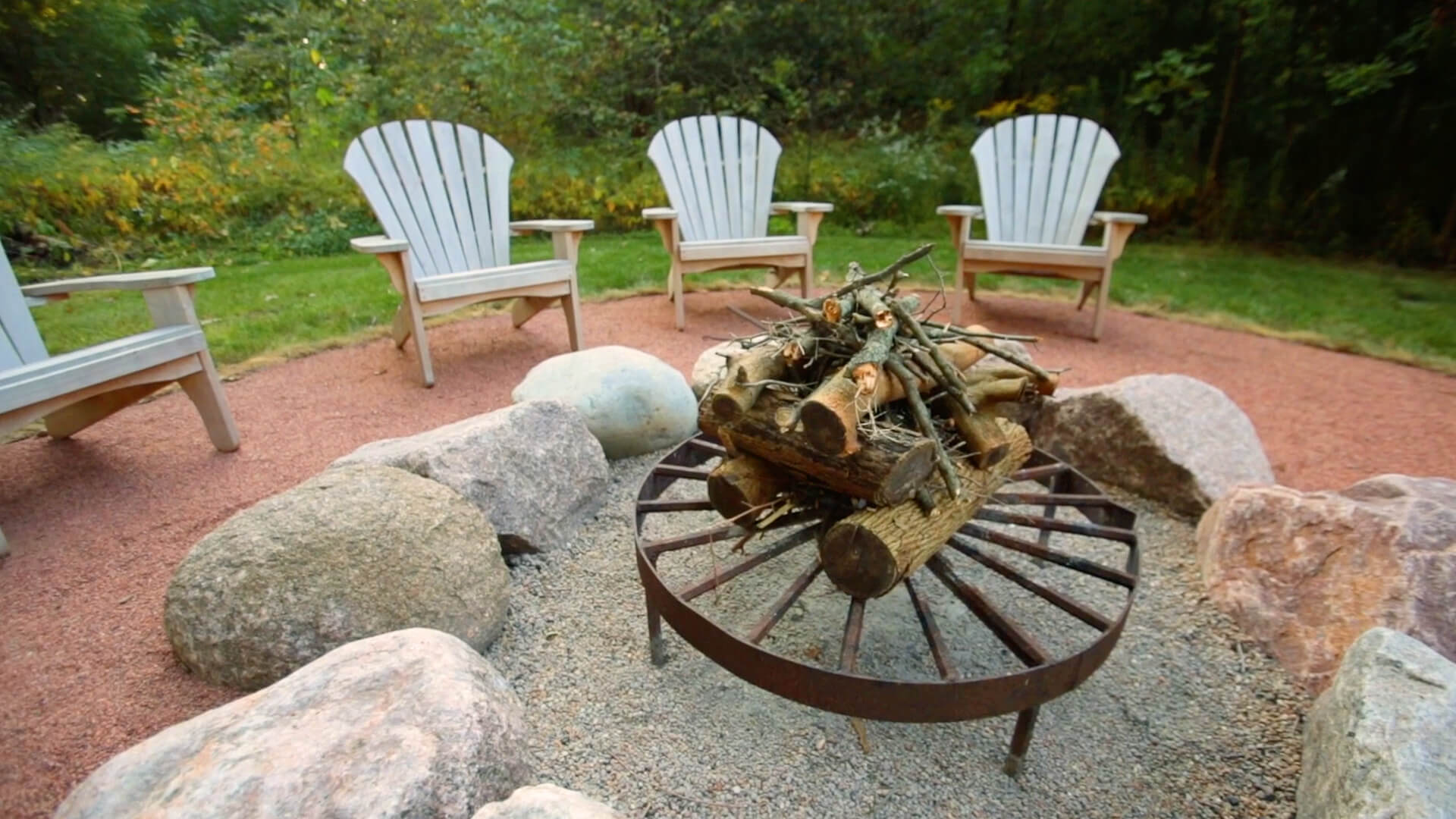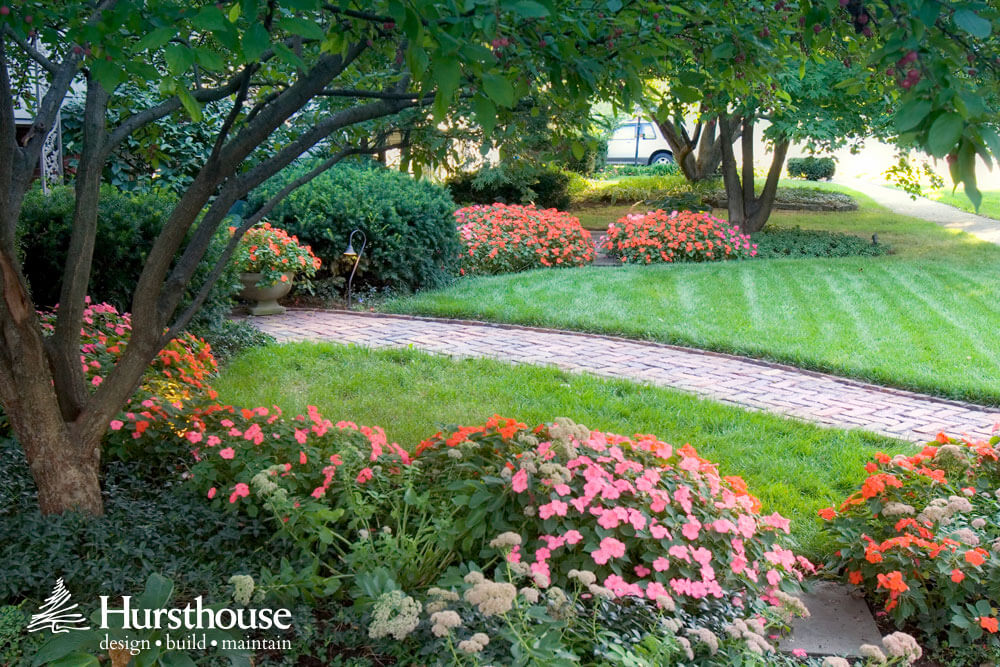Liquid Assets
Earth. Fire. Wind. Water. Our ancestors were fascinated by those elements and they continue to captivate us in gardens today. Water is often an overlooked feature for residential gardens, but the sound of trickling or cascading water can be very relaxing. It can also mask some of the street noise in urban areas. An ornamental water feature can be as simple as a fountain, a birdbath, or a contemporary pond-less waterfall. It can be a deep, koi-filled pond, where water cascades gently over large boulders and flows slowly down a meandering stream. Whatever form it takes, water adds tranquility, provides pleasant reflections of the sky and clouds, and adds ambiance to a garden.
Go with the Flow
“It can be a challenge to do a pond that looks like it really belongs on your property,” says landscape architect Bob Hursthouse. “A well-designed pond should look like it was always there, not like it was an afterthought.” For one project, Hursthouse and his team nestled ponds connected by a stream around a patio and an existing maple tree. “The excavated soil was used to create a slight rolling landform for the waterfall,” he said. An avid outdoorsman, Hursthouse explains, “I’ve really studied how rocks affect the movement of water in ponds and streams so we can design water features for the home garden that look truly natural.” For this particular project, the water source (an upper basin fed by a pump) is hidden by plants, so the homeowners aren’t staring at the pond equipment. Instead, the pond looks and feels like it has always been there. Hursthouse designed a series of small rock waterfalls into the lower basin where the fish could congregate. “We want the water to dance,” Hursthouse says. “We want it to splash down layers and levels just like it would in a natural setting.”
Location, Location, Location
Although it may be tempting to site a pond in a low spot or an unused area of the property, that poses two big problems. Installing a pond in a seldom-used spot will not guarantee the pond will be seen or even enjoyed. Low areas in the landscape collect water, runoff and possible pollutants that can affect the quality of the pond water. After a heavy rain, floodwater can pool beneath the pond liner and lift it up. No matter what their size, ponds should be seen, heard and enjoyed. As landscape architects, Hursthouse can best determine where a pond should sit on the property and the most appropriate and attractive ways to use plants around it.
Rock On
Properly placed boulders and stone slabs set around the edge help reinforce the feeling that the pond has always been there. The stones offer a resting spot for birds, frogs, turtles and dragonflies. Oftentimes, do-it-yourself pond installation finds the owner placing a ring of same-size small stones around the edge of a pre-formed, irregularly shaped pond. That ring of rocks can be a distraction. Thoughtful placement of stones and large boulders gives the pond a natural vibe.
Just the Waterfall, Please
An easy way to bring water into the garden is with a pond-less water feature. It can be as simple as a slab of beautiful, textured stone with a sheet of water that flows gently over the top and into a basin before it recirculates. It can be a stone or glass sphere from which water bubbles out of the top and flows down the sides. This type of water feature has a contemporary feel to it and they are often placed in a courtyard, near a front entrance or on a patio. Not only do they require very little maintenance, pond-less water features attract songbirds in search of a drink or a bath. A recirculating waterfall or “mini” stream can be built to provide beauty and the wonderful sounds of trickling water without a pond. These features use a recirculating system that pumps water from an in-ground reservoir through a spillway, over rocks and back into the reservoir.
Add a Little Water Music
With its soft splash of water, a fountain provides soothing sounds that transform the space into a peaceful retreat. A fountain can be as uncomplicated as a large ceramic pot with a bubbler pump that gently stirs the water. A bonus—the moving water is a deterrent to mosquitoes. Fountains can be very formal, as shown in one of Hursthouse’s award-winning projects. “We aligned the planting beds to frame the front lawn and centered a fountain on the front dining room window,” Hursthouse said. The choice of bluestone for the walk and limestone for the fountain played off the cut limestone on the house and added to the overall formality of the setting. “It’s a grand embellishment that projects a fabulous focal point from any angle,” Hursthouse says. The fountain’s submersed lighting creates a special effect after dark. In the back garden, two classical-style fountains adorned with dolphins and seashells anchor a brick wall and are centered on the kitchen and family room windows.
Taking the Plunge
Families with active children may desire an in-ground swimming pool as their water feature. Local municipalities typically require permits and fencing for pools and some ponds, depending on their depth. In-ground pools vary in size and shape—they need not be rectangular. Adding a pergola, a patio and plants can turn the pool into a wonderful, welcoming getaway. One of the most stunning features in a Hursthouse project is a “spool”—a spa-pool combination. Water spills from cast brass scuppers into the spool where therapeutic jets and warm water create a spa. The spool provides a great reflection of the vertical elements around it. From the patio, an arc of dancing water spills into the spool, which ranges in depth from 3 1/2 feet to 5 feet and contains bench seating and an auto-cover. The homeowners can adjust the water temperature and the spool can be enjoyed all year long. And, in the Chicago metropolitan area, that’s a good thing.
Add Some Bubbly to Your Landscape
Water is one of life’s vital elements—it’s no surprise that we find ourselves attracted to it. A water feature can be as simple or as elaborate as you desire. It can also be educational for children. Because water attracts different types of birds and interesting insects like delicate, but harmless damselflies and dragonflies, children can learn to appreciate nature by observing these beneficial visitors. And, time spent near a stream or any other water source has a calming effect. What better place to enjoy water but in your own garden? Find inspiration for your water feature with some of Hursthouse’s exquisite projects.


